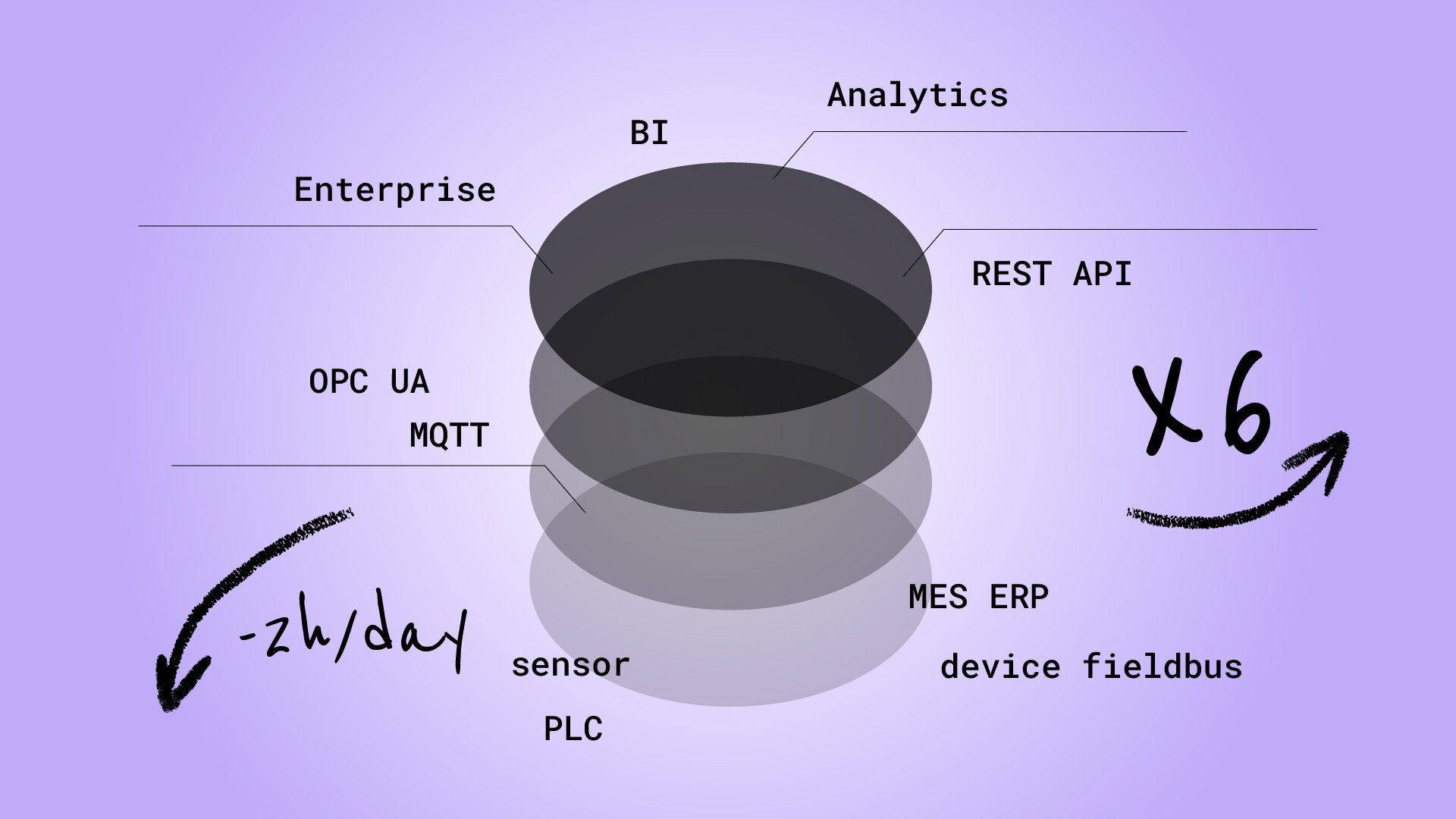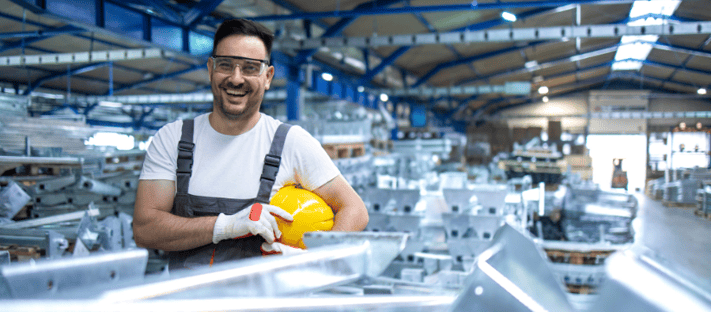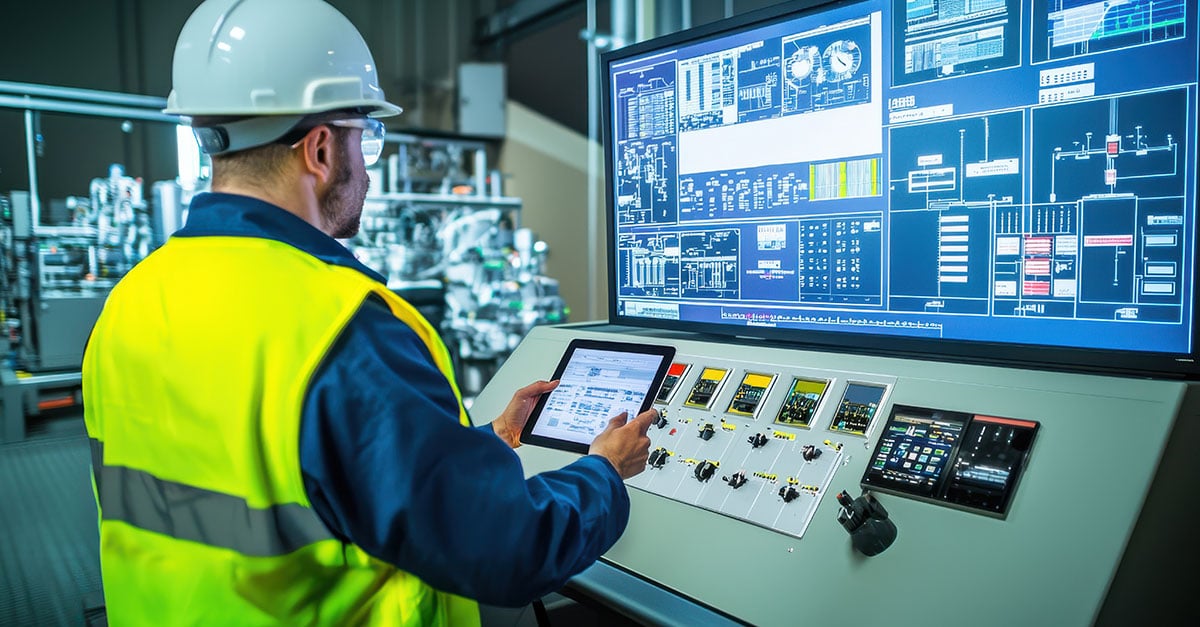
5.0 means: revolution in the manufacturing industry
 The European Commission has outlined a new industrial, social and political approach called Industry 5.0, which represents a threefold challenge for European industry: protect, prepare, and transform.
The European Commission has outlined a new industrial, social and political approach called Industry 5.0, which represents a threefold challenge for European industry: protect, prepare, and transform.
This evolution is based on three essential pillars: human-centredness, resilience, and sustainability.
The focus is shifting from technologies and their changes to processes and business models.
To understand the evolution of the industry, it is important to understand how to apply these changes. We must also be prepared for the potential impacts of Industry 5.0 both inside and outside factories.
There is still a lack of consensus on the use of the term 'Industry 5.0' in the academic and industrial community. However, the pillars of Industry 5.0 show a profound change that affects the entire society and its functioning.
Digitization and the paradigms of Industry 4.0 have already changed the world. Being prepared for this challenge is becoming increasingly important for companies. From a competitive advantage to a survival necessity.
Evolution and differences from Industry 4.0
Industry 5.0 evolves from the foundations of Industry 4.0. Industry 4.0 introduced connectivity between objects and smart factories. Industry 5.0 harnesses these technologies to increase efficiency and flexibility, topics that have been much discussed in recent years.
However, the distinctive aspect of Industry 5.0 is the emphasis on the human aspect, shifting the focus from technology alone to the central role of humans.
Industry 4.0 has been a significant step in improving industrial processes and performance through the adoption of advanced technologies.
However, it has been found to lack some key dimensions necessary to enable a systemic transformation and to ensure an essential decoupling between resource use and its negative impacts on the environment, climate and society.
A further development that considers the systemic aspect, going beyond mere optimization of industrial performance, is indispensable. This means addressing environmental and social challenges. We must seek solutions that enable more sustainable management of resources and materials. This can help reduce negative impacts on the planet and society.
Industry 5.0 aims to fill these gaps, focusing on the systemic transformation that requires a holistic and integrated approach, where human and environmental considerations take priority. A balance between efficiency and sustainability has to be achieved, addressing the complex challenges affecting the environment, climate and social welfare.
Industry 4.0 has initiated industrial evolution. However, further progress is needed to integrate environmental, social, and economic dimensions comprehensively. Systemic transformation is necessary.
Industry 5.0 is a response to this need, paving the way toward a more sustainable and holistic vision of the industry of the future.
Industry 5.0: Man at the center
The importance of the human being in the work context is one of the main values driving Industry 5.0. Industry plays a role as a 'promoter of well-being and social inclusion' in various international agreements on the environment and sustainability.
In recent years, this theme has become more important. Digitalisation has changed conventional working models. In addition, the evolution of social values has been accelerated by events such as the pandemic. This has prompted people to consider work from a different perspective.
In this context, work is no longer just a source of profit, but becomes an essential element of individual well-being.
People now attach more importance to the values and culture of a company before deciding where to work. In the past, people would accept a job without considering these factors.
This cultural evolution is mainly driven by a generation that has grown up with an increasing awareness of sustainability since childhood. Now, having reached working age, this generation does not want to accept the old production, work, economic and social paradigms, but seeks harmony between work, well-being, and personal values.
A new future for the industry?
The advent of Industry 5.0 is not, and will not be, only the result of technological changes, but will be driven by the same technologies that characterized Industry 4.0.
In particular, six new key technologies play a key role in Industry 5.0:
- Personalized interaction between man and machine: Industry 5.0 is based on the harmonious integration of human workers and advanced technological systems, enabling more intuitive and personalized interaction.
- Industry 5.0 uses intelligent materials and technologies inspired by nature. This improves the efficiency, sustainability and resilience of circular production processes.
- Digital Twins' is a virtual copy of a real system or process. They allow operations to be simulated and optimized. This helps to add value to production, make more informed decisions and increase efficiency.
- Advanced technologies allow data to be collected, transmitted, stored and analyzed in real time. This enables more efficient management of production processes, which is at the heart of Industry 5.0.
- Artificial intelligence: Industry 5.0 harnesses artificial intelligence for advanced automation, machine learning, and the ability to make autonomous decisions, optimizing efficiency and productivity.
- Industry 5.0 is committed to reducing environmental impact. It adopts energy-efficient technologies. Uses renewable energy. Develops energy storage systems. Promotes energy autonomy.
These technologies form the basis for Industry 5.0. They bring about a significant evolution in production processes: an efficient workflow to, while also opening up new opportunities, improve sustainability and the quality of work.
In conclusion: an efficient workflow
The importance of an efficient, organized workflow in Industry 5.0 is crucial for the success and transformation of the industry, as it maximizes resource utilization, improves productivity, and ensures product quality.
In Industry 5.0, the workflow becomes central to the integration of technologies and processes. A well-structured workflow enables smooth communication between the different stages of production, ensuring that information and decisions are passed on in a timely and efficient manner.
This allows any problems or delays in production to be identified and resolved promptly. Through the use of technologies such as advanced sensor technology and IoT connectivity, machine performance can be constantly monitored, and real-time data collected. This data can be analyzed to identify any inefficiencies or anomalies in the process and take immediate action.
Furthermore, an organized workflow fosters collaboration and synergy between human and machine operators. Roles and responsibilities are clearly defined, and information is shared in a structured way that is accessible to all team members. This facilitates informed and informed decision-making based on reliable and timely data.
An efficient and organized workflow also helps to optimize the use of resources. Through careful planning and optimal allocation of resources, such as machines, personnel, and materials, waste can be reduced and production optimized. This results in greater operational efficiency, better cost control, and increased market competitiveness.
Finally, a well-structured workflow promotes industry adaptability and flexibility. Through agile planning and effective process management, it is possible to respond quickly to market changes, new customer demands and emerging challenges. This enables companies to adapt quickly to new conditions and take advantage of opportunities as they arise.
In conclusion, an efficient and organized workflow plays a key role in Industry 5.0. Through optimized process management, effective communication, and careful planning, resource utilization can be maximized, productivity improved and product quality ensured.
A well-structured workflow also promotes adaptability and flexibility, enabling companies to meet the challenges of the future in a timely and effective manner.
Do you want to stay competitive and find out how to achieve more efficient, productive and connected processes?



